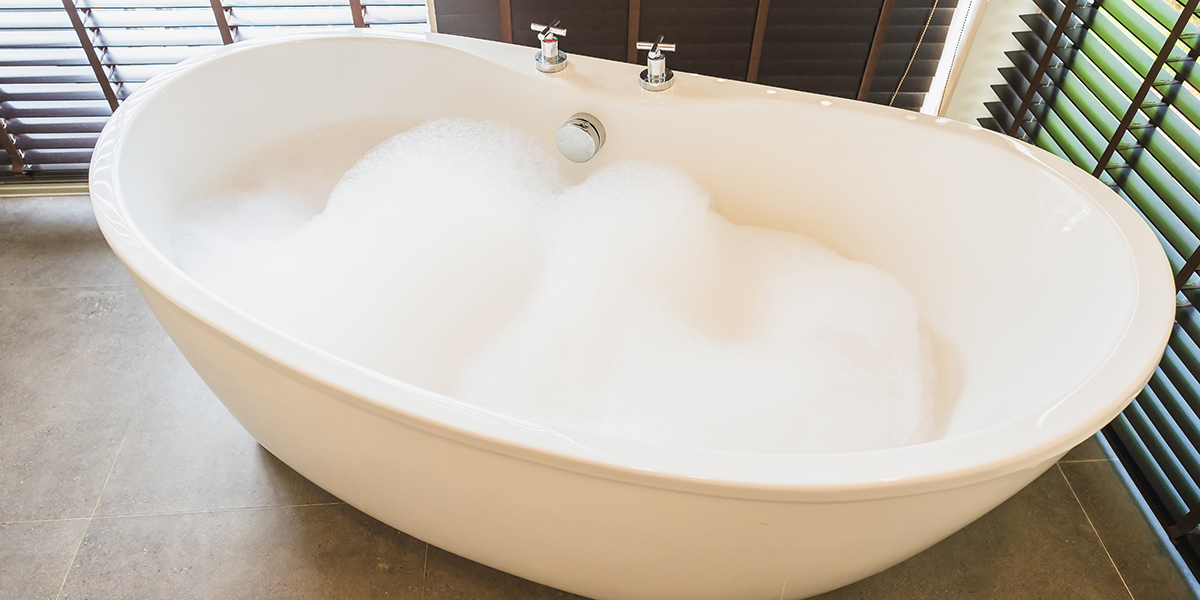What are your opinions regarding Why sewage is coming up through your bathtub?

Sewer backup in the tub can be a traumatic and unhygienic issue for any type of home owner. Not just is it bothersome, but it also presents serious wellness dangers and shows underlying problems with the plumbing system. Recognizing why sewer is turning up via the bath tub is crucial for taking ideal action to resolve the issue efficiently.
Intro to the Problem
Typical Reasons for Sewer Back-up
Clogs in the Sewer Line
One of the most usual root causes of sewer back-up is an obstruction in the drain line. This can happen due to the build-up of particles, grease, or foreign items in the pipes, protecting against proper flow and causing sewage to support right into your bathtub.
Tree Origin Invasion
Tree origins looking for wetness and nutrients can penetrate sewage system lines with small splits or joints. Gradually, these roots can grow and broaden, causing substantial damage to the pipelines and leading to sewage back-up issues.
Understanding the Issue
When sewer starts backing up right into the bath tub, it's a clear indicator of a problem with the water drainage system. The wastewater that needs to be moving away from your home is rather locating its back right into your home, which can bring about considerable damages and health hazards.
Potential Causes
Several factors can add to sewage back-up in the bathtub. From clogs in the drain line to problems with the plumbing framework, recognizing the origin is vital for discovering a solution.
Aging Framework
Older homes might have obsoleted plumbing systems that are much more vulnerable to rust, splits, and degeneration. As pipelines age, they become extra prone to leakages and clogs, raising the probability of sewage backup occurrences.
Heavy Rainfall or Flooding
During periods of heavy rainfall or flooding, the sewer system may end up being overwhelmed with excess water, creating back-ups and overflows. This can lead to sewage backing up right into bath tubs and various other fixtures inside the home.
Indicators of Sewage Backup
Foul Odors
Unpleasant smells originating from drains pipes or fixtures, specifically in the restroom, might show sewage back-up issues. These odors are frequently strong and relentless, signaling a trouble that needs prompt focus.
Slow Draining Fixtures
Bath tubs, sinks, and bathrooms that drain pipes slowly or otherwise in all could be experiencing sewer back-up. If several fixtures are affected simultaneously, it's likely that the problem stems from an usual point, such as the major sewer line.
Gurgling Noises
Unusual gurgling or gurgling noises coming from drains pipes when water is running elsewhere in your home are a sign of air trapped in the plumbing system. This air accumulation can arise from sewer backup and must be explored quickly.
Health Threats Related To Sewer Back-up
Contamination of Supply Of Water
Sewer back-up can infect the water in your home, presenting a serious health threat to you and your household. Direct exposure to infected water can lead to intestinal problems, skin infections, and various other illnesses.
Mold Development
Wetness from sewage back-up can develop excellent problems for mold and mildew development in your home. Mold and mildew spores can exacerbate respiratory issues and trigger allergies in delicate people, making punctual cleaning important.
Spread of Condition
Sewer contains dangerous bacteria, viruses, and parasites that can cause a series of diseases, including liver disease, cholera, and gastroenteritis. Coming into contact with sewage or polluted surfaces puts you at risk of infection.
Tidying up After Sewer Backup
Disinfection Procedures
Completely decontaminate and sterilize influenced areas after sewage back-up to eliminate harmful germs and avoid mold development. Use appropriate cleaning products and protective gear to guarantee secure and effective cleaning.
Reconstruction of Affected Locations
Fix any kind of damages to floor covering, wall surfaces, or components caused by sewage back-up. Depending on the degree of the damages, you might need to replace carpeting, drywall, or other products to restore your home to its pre-loss condition.
Immediate Actions to Take
Shutting Off Water Supply
In case of sewage backup, it's important to turn off the water supply to stop further contamination and damage. Find the major water shutoff valve in your home and closed it off up until the concern can be settled.
Contacting a Professional Plumber
Taking care of sewer back-up is not a do it yourself work. Call an accredited plumber with experience in taking care of sewage-related concerns to assess the circumstance and do essential repair services or clean-ups.
Preventing Contact with Infected Water
Till the sewage backup is solved, avoid contact with polluted water to prevent the spread of germs and virus. Put on safety gear if you need to be in the afflicted location and clean your hands thoroughly later.
Safety nets
Normal Upkeep of Drain Lines
Schedule regular assessments and upkeep of your sewer lines to recognize and deal with possible problems before they rise into significant troubles. This can consist of clearing out debris, evaluating for tree origin invasion, and repairing any kind of broken pipes.
Installing Bayou Valves
Think about installing backwater valves in your plumbing system to avoid sewage from flowing back right into your home during durations of heavy rainfall or flooding. These valves automatically close when water draws back up, securing your building from contamination.
Proper Disposal of House Waste
Avoid purging anything besides toilet tissue and human waste down the commode to prevent blockages and clogs in the sewer line. Dispose of grease, oil, and various other family chemicals properly to lessen the danger of plumbing issues.
Why Is Water Backing Up in My Bathtub When I Flush My Toilet?
What to do about a sewer line clog
First, don’t bother with plunging. No amount of plunging will dislodge the clog in a sewer line. The clog is too far away. Plungers are for clogs in the toilet itself, not the sewer line. Plus, the most likely causes of a sewer clog are:
Tree roots Flushed toys or feminine products Grease buildup Those items don’t move easily. And in the case of tree roots, the roots need to be cut out of the pipe and the pipe will need to be repaired.
You’ll need a closet auger. A closet auger is a type of plumber’s snake with a protective cover to keep from scratching the delicate porcelain toilet. If the clog is further down, you may need to remove the toilet or use one of your cleanouts to get to the clog.
We also recommend doing a video inspection of the drain to ensure that the cause of the clog has been completely removed. Otherwise, you could have the same problem again in a few days or weeks.
https://mspplumbingheatingair.com/blog/why-is-water-backing-up-in-my-bathtub-when-i-flush-my-toilet

As a fervent person who reads about What to Do if Sewage Starts Coming Up Through Your Bathtub, I figured sharing that piece of content was really useful. So long as you enjoyed our blog post kindly consider to pass it around. Thanks for being here. Revisit us soon.
Call Today